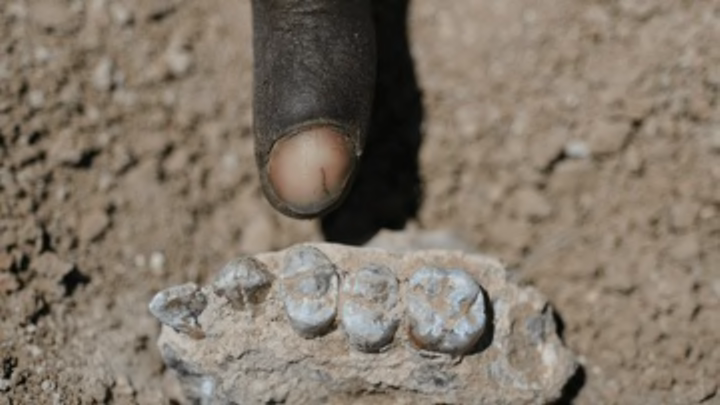Lucy, our famous human ancestor who for decades held the title of the oldest most-complete ancient hominin ever found, may have had some surprising neighbors in Ethiopia more than 3.3 million years ago. New research contends that Lucy’s species, Australopithecus afarensis, wasn’t the only ancient human relative in the area.
Based on the discovery of teeth and jawbones from between 3.3 and 3.5 million years ago, Yohannes Haile-Selassie of Case Western Reserve University and the Cleveland Museum of Natural History and his fellow researchers describe a new hominin species called Australopithecus deyiremeda in a new paper in the journal Nature. (Hominins include humans and their extinct relatives.) The bones were found just 20 miles from where Lucy was discovered in Ethiopia in 1974.
The researchers argue that the size and shape of the teeth found are different enough from previously discovered human ancestors—including A. afarensis and other proposed species like Kenyanthropus platyops (found in Kenya) and Australopithecus bahrelghazali (found in Chad)—to be classified as a new species. “There is now incontrovertible evidence to show that multiple hominins existed contemporaneously in eastern Africa during the Middle Pliocene,” they write. Only a few years ago, the same researchers found a hominin foot fossil that also suggested another species besides Lucy—one that would not have walked upright.
Image Credit: Haile-Selassie et. al, Nature, 2015
However, the issue of how many species of hominins existed at this time is far from solved. As evolutionary anthropologist Fred Spoor writes in a Nature article accompanying the research, “the increasingly rich fossil record of the middle Pliocene provides plenty of opportunity for lively debate,” which is a polite way of saying that plenty of anthropologists will be ready to duke it out for the next few years over the coexistence of multiple hominin species during this era.
Whether or not different species of human ancestors (and just how many) were around in addition to Lucy’s A. afarensis has been debated since the 1980s, with some anthropologists arguing that the diversity between some of the fossils discovered is too great for them to be one species. However, it can be difficult to determine how many species may have existed, because the bones that have been discovered have been only fragments of skeletons. (Lucy's skeleton is only 40 percent complete.) It can be hard to figure out how a particular species may have walked, for instance, if scientists have not found hip and foot bones.
“It doesn’t really make sense for these four fossils to be isolated there as the only record of this species, when there are hundreds of fossils from the same time period so nearby,” anthropologist John Hawks explained via email. “If Haile-Selassie is right, then our fossil collection should already include some of this species, and a lot of what others have written about the evolution of early hominins in this part of the world will fall apart.”
This finding "undeniably shows that there’s more diversity than we thought in the early branches of human evolution,” says Brian Richmond, curator of human origins in anthropology at the American Museum of Natural History. “Early human evolution is more complicated than we thought."
